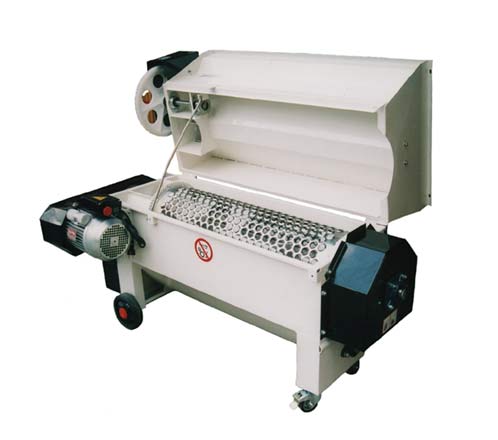 Tuesday 5th May
Tuesday 5th MayWhen the grapes arrive at the winery, they are tipped into a crusher/de-stemmer which separates the grapes from the stems. The ideal is to do this in a way which does not crush stems or pips, as these are high in tannins which would result in very astringent wines.
What are essential are the pulp and the skins. While many people think that wine is made from the juice of grapes, in actual fact the skins are necessary not only to give colour to the red wines, but also add delicate flavours not available just from the juice. So, after de-stemming, the must (ju
 ice and skins) goes into the fermentation vats where we keep it cool to help extract colour before the ferment starts.
ice and skins) goes into the fermentation vats where we keep it cool to help extract colour before the ferment starts.Once that occurs we pay careful attention to both the temperature and fall in sugar levels. With temperature the goal is to ferment between 25 and 30 degrees centigrade. Hotter ferments risk over-extracted wines, while at low temperatures yeasts do not function well. Where temperature needs to be adjusted we use heating/cooling coils to bring it back into balance.
Ferments usua
 lly take between 7 to 10 days, during which we plunge the cap (the skins which float to the surface of the wine) back into the wine to ensure optimum extraction of colour and flavour. In cases where the cap is really thick, we may have to resort to pumping the juice over the cap. The traditional name for this process is pigeage.
lly take between 7 to 10 days, during which we plunge the cap (the skins which float to the surface of the wine) back into the wine to ensure optimum extraction of colour and flavour. In cases where the cap is really thick, we may have to resort to pumping the juice over the cap. The traditional name for this process is pigeage.Currently we have numerous red ferments underway – Syrah, many of Pinot Noir, Cabernet Sauvignon and Cabernet Franc. Each of them is monitored closely. We check the rate of progress several times daily, not only by measuring the rate at which sugars are being converted to alcohol, but also by ensuring the ferment is healthy and active.
